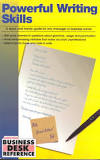What Does it Take to be a Sophisticated Blog Marketer?
The original meaning of the word “sophisticated” was quite different from the way we think of it today, author Bill Brohough teaches in The Gloomy Truth Behind the Words You Use . To “sophisticate” something was to adulterate it by mixing it with something inferior, so being sophisticated meant the opposite of genuine.
When it comes to online marketing – even using the description “sophisticated” as we understand that word today (meaning cultured and refined) – what qualities set that level of marketing apart? “What is a ‘sophisticated marketer’, anyway?” asks Alex Rynne of LinkedIn’s Marketing Solutions blog, gathering responses from various marketers.
Some different “takes” on the question include:
- one who focuses on results over marketing tactics and activities
- one whose marketing is not elitist and complicated
- someone who takes both old and new marketing techniques and executes them in a calculated hybrid of strategies
- one who delivers the right kind of information to buyers across the entire customer lifecycle.
- one who questions each premise and considers alternatives
To sell a product or service, you must market it differently depending on what stage of sophistication your market is in at the time, Todd Brown shares in his blog post “The Greatest Marketing Lesson I Ever Learned.”
Often, sophistication means simplification, I teach newbie Indianapolis blog content writers. Matching our writing to our intended audience is part of the challenge we business blog content writers face. After all, we’re not in this to entertain ourselves – we’re out to retain the clients and customers we serve and bring in new ones, so we try to use words and sentences to which our target readers can relate.





 Want to pick up the kazoo? Start with Rule No. 1, advises
Want to pick up the kazoo? Start with Rule No. 1, advises
Follow us online!